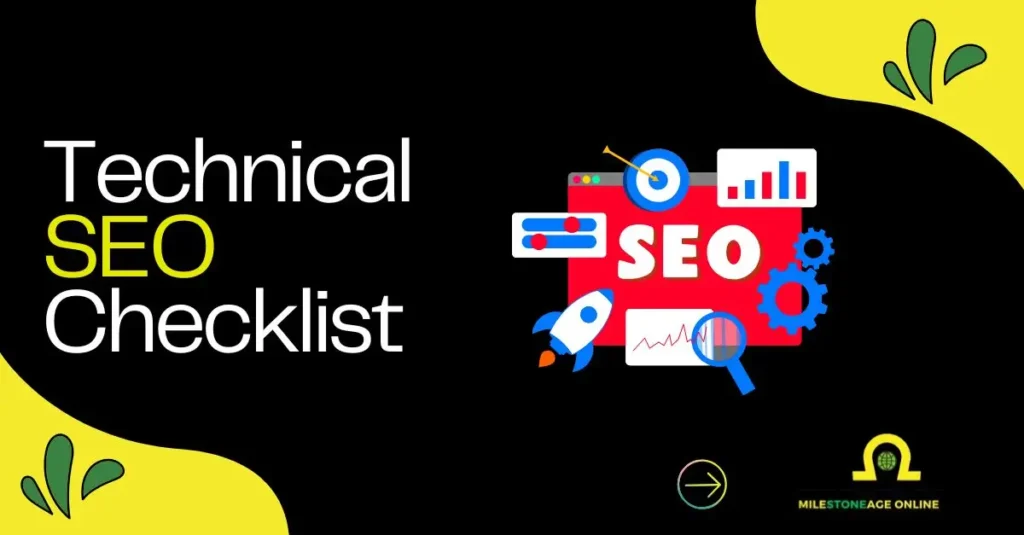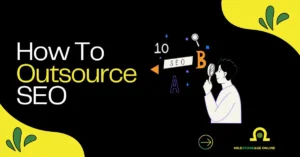A technical SEO checklist keeps your site healthy and visible online. It ensures that search engines can easily read, index, and rank your pages.
1 Audit your site regularly to catch errors early
2 Improve Core Web Vitals for speed and stability
3 Optimize for mobile-first indexing with responsive design
4 Fix crawlability issues through robots.txt and XML sitemaps
5 Add structured data for rich snippets and AI readiness
6 Secure your site with HTTPS and updated software
7 Simplify navigation with clear menus and internal links
8 Track performance and ROI through tools and analytics
Following these steps builds a strong technical base, giving your site lasting visibility and trust in both search engines and AI-driven platforms.
Introduction
Technical SEO is about making your website easy for search engines to read and rank. It focuses on speed, structure, security, and user experience. When your site works smoothly, both people and search engines trust it more.
A small error in setup can block pages from showing in results. That is why having a clear checklist matters. From crawlability to mobile readiness, every step adds to better visibility.
Think of it as a health check for your site. Simple actions today can save bigger issues later.
Let’s start with the first step: crawlability and indexing.
Uncover Crawlability & Indexing Roadblocks
Search engines need to reach your pages before they can rank them. If crawling or indexing fails, your site visibility drops instantly.
Crawlability means bots can reach your pages. Indexing means they appear in search results. Google and Bing rely on signals from files, tags, and sitemaps. A clear site audit prevents missed pages and wasted crawl budget.
Key steps to improve crawlability and indexability
- Verify indexed pages: Use Google Search Console’s Pages report to confirm what is indexed.
- Fix directives: Review robots.txt and meta-noindex tags to stop blocking important pages.
- Submit a clean XML sitemap: Include only 200-status URLs and remove outdated entries.
- Monitor crawl budget: Cut thin or duplicate pages that drain resources.
Strong crawlability supports indexability. When bots read your site smoothly, they save time and prioritize key pages. Without fixing crawl issues, other SEO actions fail to show results. A clean, accessible structure ensures search engines see the best version of your site.
Speed Up with Core Web Vitals Mastery
Fast websites keep users engaged and improve rankings. Google’s Core Web Vitals are now direct signals.
The three metrics—Largest Contentful Paint (LCP), Interaction to Next Paint (INP), and Cumulative Layout Shift (CLS)—measure load time, responsiveness, and stability. INP replaced First Input Delay in March 2024. Passing these thresholds boosts both UX and search performance.
Practical steps for better Core Web Vitals
- Use PageSpeed Insights: Run tests to spot slow elements across devices.
- Optimize media: Compress images, preload fonts, and use next-gen formats.
- Minify CSS and JavaScript: Remove unused code and streamline delivery.
- Preload key assets: Prioritize hero images or primary fonts for faster rendering.
- Reserve size attributes: Stop layout shifts by defining height and width.
Google sets targets: LCP ≤ 2.5s, INP ≤ 200 ms, CLS < 0.1. Meeting these levels builds trust and improves conversions. Technical fixes may seem small, but together they create a site that loads quickly and feels smooth to every visitor.
Secure & Clean URL Structure
URLs act as road signs for users and search engines. Clean and secure links build trust.
HTTPS, SSL/TLS, and canonical tags keep content safe and consistent. Since 2014, HTTPS has been part of ranking signals. Simple URL changes can stop duplicate content and strengthen authority.
Best practices for secure and readable URLs
- Migrate to HTTPS: Secure all pages and fix mixed content errors.
- Redirect non-canonical versions: Decide between www or non-www and keep it consistent.
- Use friendly formats: Create hyphenated, keyword-based URLs and avoid query strings.
- Add canonical tags: Point each page to itself to prevent duplicates.
A well-structured URL is easy to share and index. It avoids confusion and builds credibility with both users and bots. Technical SEO begins with clean paths that signal relevance and safety. Strong URL hygiene sets the foundation for better ranking and user trust.
Audit Site Structure & Navigation Flow
A strong site structure guides users and search engines with clarity. Good navigation builds trust and keeps people on your site longer.
Site architecture and menu structure should feel simple. Internal linking supports indexability and helps spread authority across key pages. Mobile-first indexing makes this setup even more important.
Practical steps to improve site structure and navigation
- Use hierarchical folders: Organize URLs by topic, such as /blog/technical-seo-checklist.
- Limit menu items: Keep choices around six or seven and use sticky or footer menus.
- Audit internal links: Use descriptive anchor text, repair 404 errors, and avoid broken links.
- Check outbound links: Ensure external sites are trustworthy and contextually relevant.
Clear navigation improves UX and signals relevance to search engines. Strong linking and menus make content easy to find and share. A balanced structure reduces confusion, keeps users engaged, and helps bots crawl more effectively.
Deploy Structured Data & Schema Markup
Structured data helps search engines understand your content. Schema markup adds context and improves visibility.
Schema.org markup enables rich snippets such as FAQs or breadcrumbs. This boosts click-through rates and prepares your site for AI snippets.
Key steps to implement schema markup
- Identify relevant schema types: Add markup for Article, FAQ, Breadcrumb, or SiteNav.
- Validate structured data: Test with Google’s Rich Results tool before deployment.
- Ensure JSON-LD format: Stick to Google’s preferred format and avoid errors.
- Update schema regularly: Revise markup to reflect fresh content and page changes.
Adding schema is a small step with a big impact on SERPs. It provides clear signals to search engines, improving indexing accuracy and user engagement.
Optimize Mobile-First & Improve UX
More than half of global traffic comes from mobile devices. Google indexes sites with mobile-first priority.
Responsive design and clean UI drive better user experience across devices. Small changes to layout, forms, and CTAs improve performance and conversions.
Steps for mobile-first optimization
- Conduct mobile audit: Test font readability, button size, and page layouts.
- Use responsive design: Match content parity across devices with adaptive layouts.
- Simplify forms and CTAs: Shorten forms and place CTAs for easy visibility, such as bottom left in F-pattern reading.
- Monitor mobile performance: Use Google Search Console’s Mobile Usability report to track issues.
Strong mobile-first practices improve rankings and keep users engaged. A responsive site ensures consistency, faster interaction, and better accessibility for all visitors.
Monitor Security & Site Health Regularly
A secure site protects users and maintains trust with search engines. Poor security risks visibility and user safety.
Google measures Safe Browsing as part of site quality. With billions of malware attacks reported, ongoing monitoring is critical.
Actions to improve site security
- Use Google Safe Browsing tool: Check your site for malware or unsafe content.
- Keep software updated: Regularly update CMS, plugins, and server-side systems.
- Audit third-party scripts: Remove vulnerable or unnecessary code that weakens security.
- Limit plugin usage: Use fewer plugins and block known malicious content.
Security directly impacts site health and SEO. Regular updates and audits prevent penalties and downtime. A safe site keeps both users and search engines confident in your content.
Ongoing Audits & ROI Tracking
SEO is not a one-time fix. Regular audits keep your site healthy.
Search engines push hundreds of updates every year. Without tracking, small errors can hurt visibility and ROI. Technical audits and monitoring give you control over performance and costs.
Steps to run audits and measure returns
- Run technical SEO audits: Do this at least once a year or after major algorithm updates.
- Use trusted tools: Platforms like Ahrefs, Screaming Frog, SEMrush, and GTmetrix provide detailed reports.
- Track performance metrics: Watch Core Web Vitals, crawl stats, indexing rates, and organic traffic using Google Search Console and Analytics.
- Calculate ROI: Apply the formula (organic conversions value – SEO cost) / cost × 100.
- Stay updated: Follow SEO blogs and trackers to react quickly to changes.
Regular reviews protect rankings and help you measure financial impact. With clear ROI, it becomes easier to show how SEO contributes to business growth.
Semantic SEO & AI-Ready Enhancements
Search engines and AI systems now look for context, not just keywords. Semantic SEO connects content with intent and entities.
Optimizing for AI overviews means writing in a way that systems can extract. Using clear language, structured formats, and LSI keywords improves both reach and clarity.
Actions to build semantic and AI-ready SEO
- Use LSI keywords: Add terms like “crawl budget”, “structured data”, and “mobile-first” naturally in your content.
- Design clear formatting: Structure headings and bullets for easy snippet generation.
- Embed key entities: Mention tools such as Google Search Console and metrics like Core Web Vitals to boost relevance.
- Provide direct answers: Use FAQ style content and schema markup to support AI-driven summaries.
Semantic SEO makes your site ready for both search engines and AI platforms. With entity-based writing and structured content, your pages gain higher chances of ranking in SERPs and appearing in AI-generated overviews.
Future-Proof Your Site with a Strong Technical SEO Checklist
By following this Technical SEO Checklist, you create a solid foundation that helps search engines and AI systems read and rank your content effectively. It’s more than fixing errors—it’s about preparing your site for long-term visibility.
Each step, from crawlability to schema, improves performance and trust. Want to boost your site’s reach and stay ahead in search and AI overviews?
Start now—run a full audit, apply these steps, and keep your SEO strong for the future.
FAQs
Why is Core Web Vitals key?
Metrics like LCP, INP, and CLS directly impact user experience and search rankings. Optimizing them improves site speed, stability, and engagement, which helps both visibility and satisfaction.
How often should I audit technical SEO?
Run audits at least once a year or after major updates. Google rolls out around 600 algorithm changes annually, so timely checks keep your site aligned with best practices and prevent performance loss.
Do I need schema for AI rankings?
Yes. Structured data allows LLMs and AI overviews to connect entities and context. It increases the chance of appearing in rich snippets and being included in AI-driven responses.






